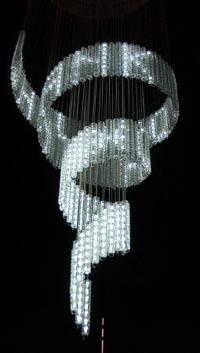We never did it of course, but many people remember sitting by their cassette radio as a child, waiting to tape favourite songs off the charts to a fresh C90. Stream ripping is basically a 2004 remix of that old Sunday evening tradition, and it’s providing music sharers with a “new” way to acquire content – and it’s untraceable.
Stream ripping applications allow users to capture multiple streams all day, amounting to several thousand songs. In fact, one program, StationRipper will record 300 streams simultaneously and make a separate MP3 for every song played. It will even skip broadcast tracks that you’ve already recorded.
We tried StationRipper this morning as a bit of reaseach and found it almost unbelievably easy to use. It works best with Shoutcast, but you can access any radio station stream you have a URL for.
One feature that particularly impressed us was the ability to buy whatever music was being played in a stream – simply click on the station and then the buy button: StreamRipper takes the track details to Amazon and presents you with the album featuring the track, if it’s found.
Greg Ratajik wrote StationRipper after he saw the limitations in other programs like StreamRipper32, and estimates that the program has been downloaded over 350,000 times.
Whilst not quite as user friendly as many P2P packages, and with many of the problems associated with recording traditional radio stations (lower broadcast quality, DJs prattling over the top of music), programs like StationRipper present a convenient way of time-shifting internet radio broadcasts.
Acquiring music from ripping radio streams is untraceable, unlike logging onto P2P networks and downloading tracks. The radio station will have a listener’s IP number, but since users aren’t required to log into most stations, it’s extremely difficulty to ID them. Besides, they have no way of telling if someone is listening to a stream or archiving it.
But is it legal? Stream ripping software has lots of non-infringing uses, so it looks like the programs have nothing to fear … yet. It’s really up to what the user then does with the music – if they are using it as a way to acquire music without paying, or then go onto to share streams or tracks that they have ripped, then that’s illegal.
Stream ripping applications go to further demonstrate that if labels insist on crippling music with restrictive and untrusting DRM, then inventive consumers will find ways to defeat it until they get a fairer system.
StationRipper
Shoutcast
 Swarovksi, an Austrian crystal group famed for their chandeliers (where else do you get yours anyway?) have demonstrated a chandelier that displays text messages sent to it from mobile phones.
Swarovksi, an Austrian crystal group famed for their chandeliers (where else do you get yours anyway?) have demonstrated a chandelier that displays text messages sent to it from mobile phones.